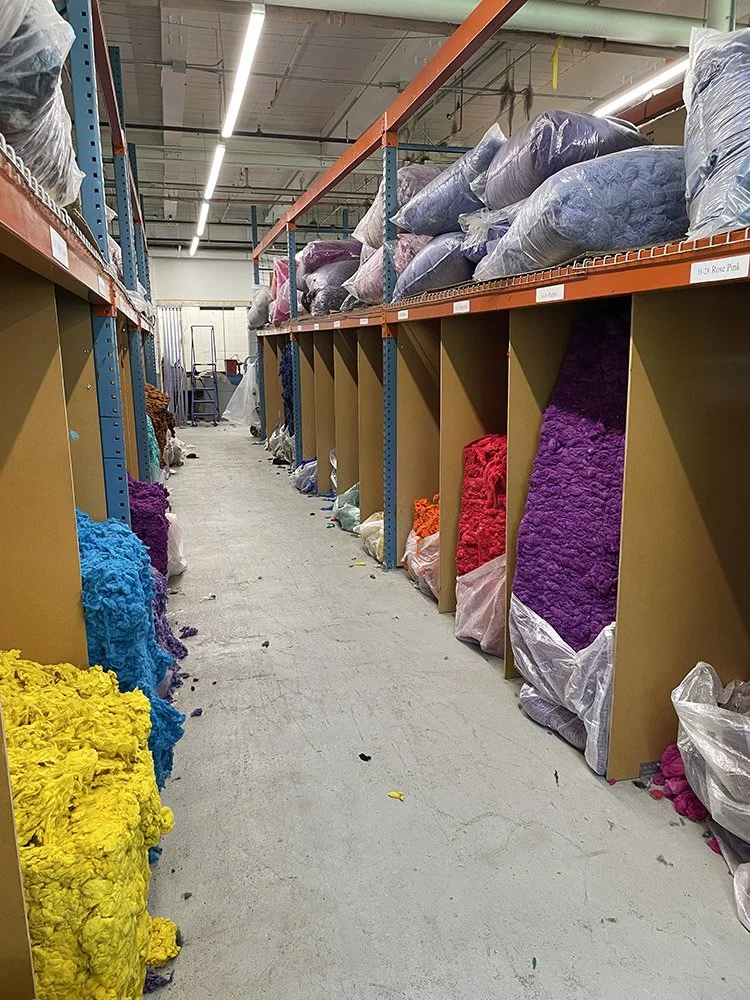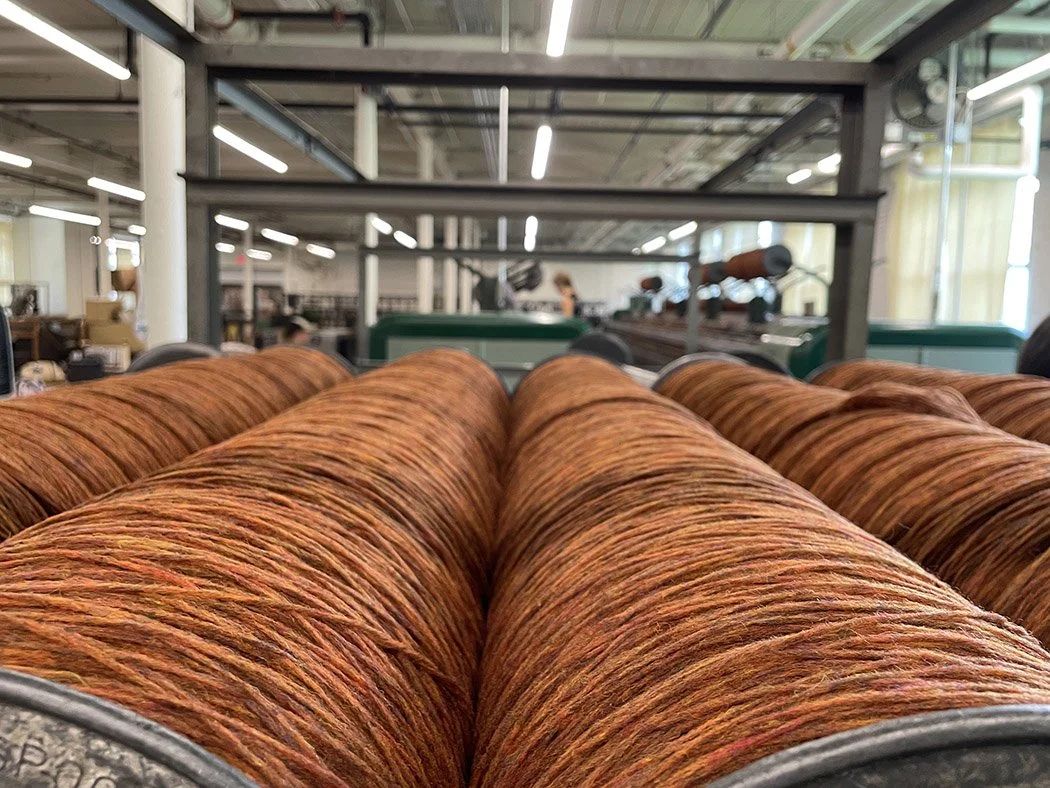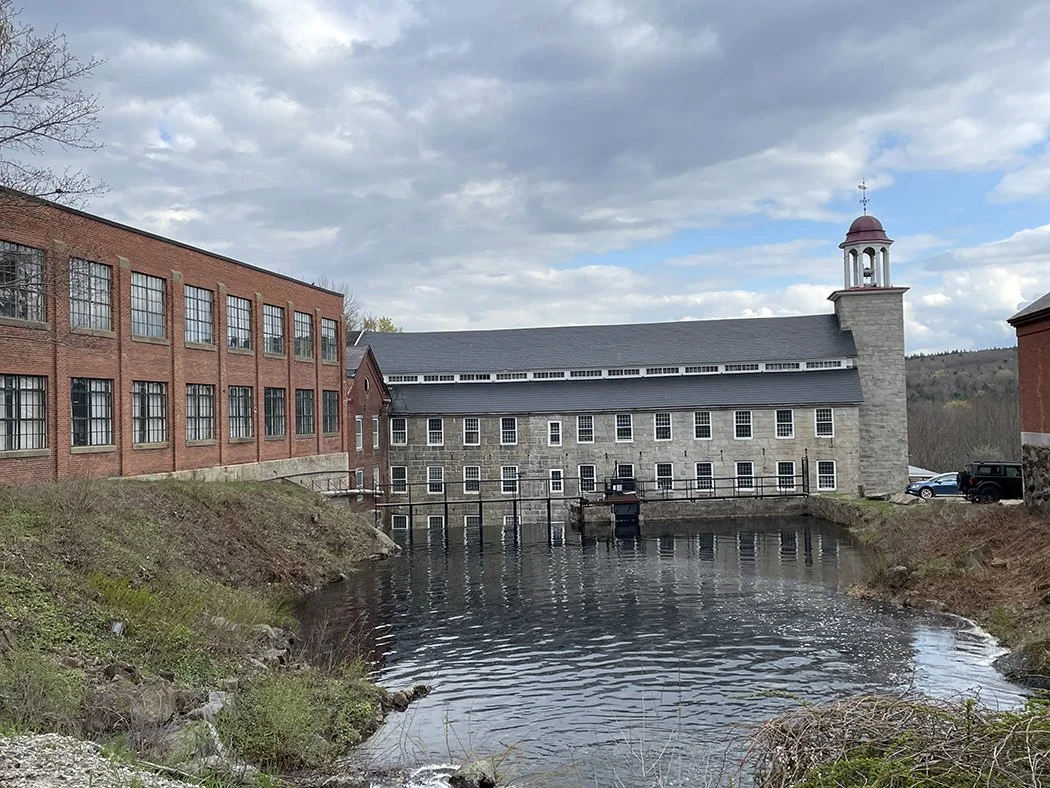While at Harrisville Designs (HD) last month to teach a class, I took another tour of the mill. I never miss a mill tour as I learn more about making yarn every time I go. The mill manager Sarah led us through the woolen spinning mill and answered many questions. I made another video in 2013 about the mill which you can see on YouTube HERE. In that video, the mill was in a different building some distance from the rest of Harrisville Designs. In that video you can see the now-retired long-term mill manager Babs talking to us about the process.
They had to move the mill a few years ago due to a flood and if you want to hear some stories from very nervous mill workers, ask them about moving this equipment! HD moved their equipment from the late 1800s and early 1900s to one of the original mill buildings. It is interesting to see the video linked above from 2013 because they’ve also updated their washing and skeining systems since then.
Why does it matter how yarn is made?
I think it is important to understand the materials we use when making art. For the most part, weavers use yarn as their main material. The characteristics of any one yarn are widely varied depending on the fiber used, how it is spun and plied, and how it is finished.
As a tapestry weaver, I use primarily wool for my weft and cotton for my warp.* Wool is a marvelous material. The sheep that grow it can improve the health of the planet, their fleece is renewable, and it comes in such wide varieties you’ll never explore all the possibilities wool offers for making art.
Harrisville Designs is a woolen mill which refers to the way the fibers are spun, not to the fact that most of the material they spin is actually wool.
The short video below gives you an overview of the process and shows the machines working. If you get the blog via email you can watch the video on YouTube HERE.
The fleece comes to Harrisville Designs from their dyer in huge bales weighing hundreds of pounds each. Harrisville makes their colors by mixing these base colors in the spinning process. This is why their yarns are heathered. They’re made up of bits of many different colors which blend in the yarn and in our eye. This also means that these yarns are wonderful for blending and I often teach beginning tapestry weaving using Harrisville Highland. It is also a wonderfully easy yarn to dye as is their Harrisville Koehler singles which I use for my own large-format work.
The mill process
The fleece is put through the picker which opens the locks and mixes the colors and then it goes through the carder.
The carders are massive machines. The picked fleece blends go in one end and come out the other as pencil roving.
The end of one of the carding machines at Harrisville Designs
Huge rolls of pencil roving
The huge cylinders of pencil roving come off the carder and are put on the spinning frames to add twist. Once twist is added, we get something we would recognize as yarn.
Two spinning frames where twist is added.
After being spun at a particular specification for the yarn they’re making, the singles might be plied to make a 2, 3, or 4 ply yarn. After plying the yarn is finished and made into cones or skeins for the user.
The old mill building was a bit outside the main part of the town of Harrisville. The mill move put the equipment into the red brick building to the left in the photo below. Please watch the video in this post for more details of the spinning process.
Harrisville Designs spinning mill
Harrisville Designs and the town of Harrisville
To learn more about Harrisville Designs, please visit their website at https://harrisville.com/. They have a wide variety of beautiful looms and other equipment alongside a varied selection of yarns. My main tapestry loom is the Harrisville Designs Rug Loom. They also offer workshops much of the year. You can read more about my recent workshop and get a peek at their teaching space HERE.
The town of Harrisville is also well worth a visit. I recommend watching this video, Red Brick Village, created by Historic Harrisville. The owner of Harrisville Designs, Chick Colony (along with his wife Pat Colony and their son Nick Colony) was instrumental in saving this mill when his father and grandfather’s mill went under in 1970.
What makes a good tapestry yarn?
If you’d like to learn more about wefts for tapestry weaving, I have an online course on the subject called What Makes a Good Tapestry Yarn? In that class I talk about why we choose a certain type of yarn for tapestry, how to evaluate a new yarn for yourself, and I also review over 20 different yarns and their suitability for tapestry depending on what it is you want to express in your work.
Other blog posts about tapestry yarns include:
*Other warp materials I do use are linen and wool. Cotton seine twine is my favorite warp for most applications.





